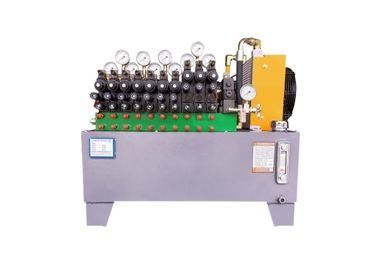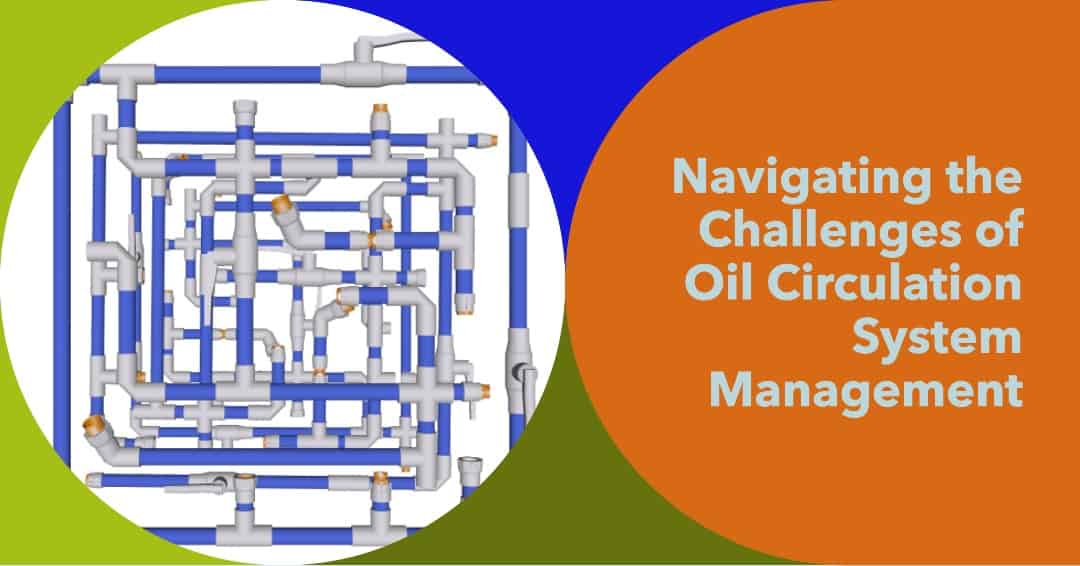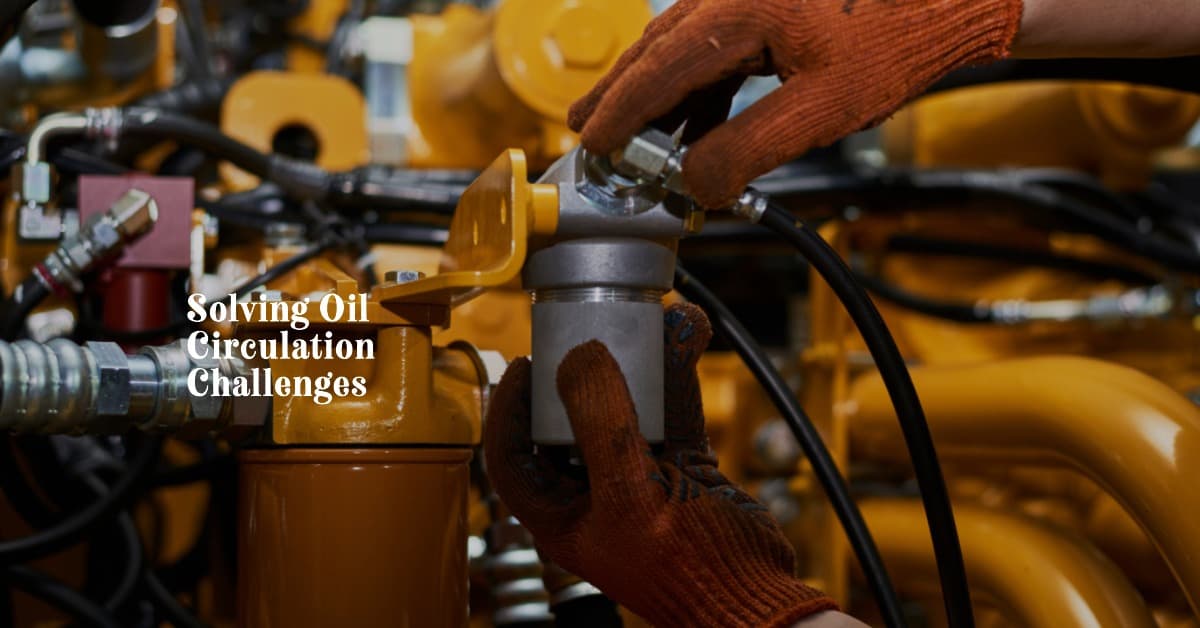
Introduction
Oil circulation systems are integral to the efficient operation and longevity of heavy machinery. These systems ensure that machinery bearings, gearboxes, and other components are adequately lubricated, cooled, and maintained. In this blog, we will explore the key components, challenges, and strategies for optimizing oil circulation systems to enhance machinery performance and reliability.

Key Components of Oil Circulation Systems
Understanding the core components of oil circulation systems is essential for effective operation and maintenance. Each component plays a pivotal role in ensuring that the system functions optimally. Here, we delve deeper into these components, their functions, and their importance.
Detailed Insights:
- Pumps: The choice of pump is critical and depends on the system’s capacity, the type of oil used, and the operational demands of the machinery. Regular maintenance ensures that the pump delivers oil at the required pressure and flow rate.
- Motors: Motors should be selected based on their efficiency, reliability, and compatibility with the pumps. They should be regularly inspected to prevent breakdowns and ensure energy efficiency.
- Filters: Filters should be chosen based on the type and size of contaminants they can remove. Regular replacement or cleaning of filters is essential to maintain oil purity.
- Heat Exchangers: These should be selected based on the system’s cooling requirements. Regular inspections ensure that they effectively regulate oil temperature, preventing viscosity issues and component damage.
- Reservoirs, Piping, Control Valves, and Sensors: These components should be designed and installed with precision to ensure that the system operates seamlessly. Regular inspections and maintenance are crucial to identify and address wear and tear, leaks, and other issues.
| Component | Function | Importance |
| Pumps | Responsible for circulating the oil throughout the machinery. | Ensures that all parts of the machinery receive adequate lubrication, preventing wear and tear and overheating. |
| Motors | Powers the pump to circulate the oil. | A well-maintained motor ensures that the pump operates efficiently, ensuring consistent oil flow. |
| Filters | Removes contaminants from the oil to maintain its purity. | Clean oil reduces the risk of component damage and ensures efficient operation, extending the machinery’s lifespan. |
| Heat Exchangers | Regulates the temperature of the oil to keep it within the optimal range. | Prevents the oil from becoming too hot or too cold, ensuring effective lubrication and reducing wear and tear. |
| Reservoirs | Holds the oil when it’s not circulating, allowing contaminants to settle and air to escape. | Ensures a consistent supply of clean, aerated oil to the system, enhancing performance and longevity. |
| Piping | Transports the oil throughout the system and to the machinery components. | Efficient piping ensures that oil is delivered promptly and effectively to where it’s needed, reducing friction and wear. |
| Control Valves | Regulates the flow and pressure of the oil within the system. | Allows for the adjustment of oil flow and pressure according to operational demands, enhancing efficiency. |
| Sensors | Monitors various parameters like temperature, pressure, and flow rate. | Provides real-time data for monitoring and management, enabling prompt interventions to prevent issues. |

Challenges in Oil Circulation System Management
- Environmental Factors: External conditions like temperature fluctuations and humidity can impact the viscosity and flow of oil, affecting the system’s efficiency.
| Environmental Factor | Detailed Challenge | Advanced Mitigation Strategies |
| Temperature Fluctuations | Temperature extremes can lead to oil thickening or thinning, impacting its ability to lubricate and cool machinery effectively. | – Utilizing oils with specific temperature tolerances and additives.- Implementing advanced heat exchangers and cooling systems. – Incorporating sensors and automated systems for real-time adjustments. |
| Humidity and Contamination | Moisture ingress due to high humidity levels can lead to oil contamination, corrosion, reduced lubrication efficiency, and increased wear and tear. | – Installing desiccant breathers to absorb moisture.- Implementing oil analysis programs to monitor water content. -Utilizing oils with enhanced water separation properties. |
| Dust and Debris | High levels of dust and debris, especially in industrial or construction environments, can lead to particulate contamination, abrasive wear, clogged filters, and reduced oil life. | – Enhancing sealing and filtration systems to prevent contamination.- Regular environmental cleaning and maintenance. – Implementing air filtration and purification systems. |
-
- Operational Demands: Heavy machinery often operates under intense conditions, leading to increased wear and tear if the oil circulation system is not up to par.
- Maintenance Issues: Regular maintenance is essential to ensure that all components are functioning optimally, and potential issues are addressed promptly.

Challenge And Solution
| Case | Challenge | Solution |
| 1 | Complexity of constructing a circulating oil system with in-house resources. | A balanced approach combining in-house expertise and external consultation to build the system efficiently and according to industry standards. |
| 2 | Issues like lack of procedures, improper sampling points, overgreasing, and lack of a labeling system. | Implement standardized procedures, optimize sampling points and hardware, and enhance the labeling system for efficient lubrication and system performance. |
| 3 | Ensuring the longevity of large, heavy, and high-speed bearings. | Utilize a circulating oil system as a cost-effective solution for optimal longevity through continuous and efficient lubrication. |
| 4 | Guaranteeing consistent oil flow to each lubrication point. | Employ Isohitech oil circulation systems for customized and turnkey solutions that assure accurate and reliable oil flow, enhancing lubrication efficiency. |
| 5 | Addressing lost circulation issues in the oil and gas industry. | Add solid materials to the oil to ensure continuous circulation, prevent losses, and enhance operational efficiency. |
Conclusion
Oil circulation systems are pivotal in ensuring that heavy machinery operates efficiently and reliably. By focusing on customization, technology integration, and preventive maintenance, businesses can optimize these systems, enhancing machinery performance, reducing downtime, and increasing productivity.
F.A.Q
Temperature extremes can lead to oil thickening or thinning, impacting its ability to lubricate and cool machinery effectively. This can be mitigated by using oils with specific temperature tolerances and installing advanced heat exchangers.
Solutions include enhancing sealing and filtration systems, installing desiccant breathers to absorb moisture, and implementing oil analysis programs to monitor and manage contamination levels.
Implementing predictive maintenance technologies, real-time monitoring, and a well-planned maintenance schedule can significantly reduce unscheduled downtime and enhance system reliability.
High energy consumption can be addressed by optimizing energy consumption, upgrading to energy-efficient components, and implementing smart monitoring systems to adapt operations based on real-time demand.
Adding solid materials to the oil ensures continuous circulation, preventing losses and enhancing operational efficiency.
Environmental factors like temperature, humidity, and contamination sources can significantly impact system performance. Adaptive measures, technology integration, and preventive maintenance are essential to mitigate these effects.
Technical journals, industry publications, and websites of companies specializing in lubrication technologies are excellent resources for detailed case studies and solutions.




